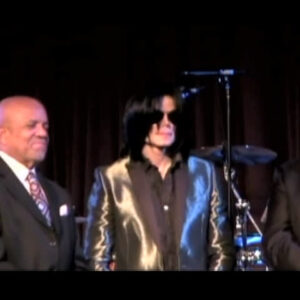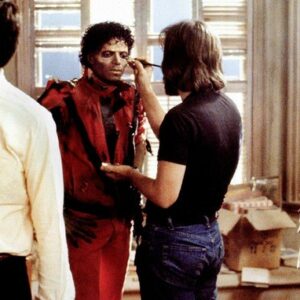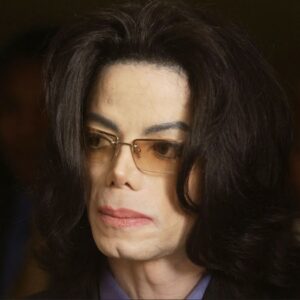Bruce Willis is a name that has become synonymous with Hollywood stardom, particularly in the realm of action films. His career spans over four decades, where he has remained not just a fixture in cinema but a symbol of toughness, charm, and versatility. However, beyond the silver screen, Willis has also mastered the art of cultivating his public persona through magazine covers—those glossy, ubiquitous snapshots of celebrity culture that serve as both mirrors and shapers of fame. This article delves into how Bruce Willis leveraged magazine covers to solidify his iconic status, reflecting the evolution of his career and persona from action hero to Hollywood legend.
Bruce Willis’s Ascendancy as an Action Star
The 1980s and 1990s were the golden era of action heroes—muscle-bound men who saved the world on a regular basis. In the midst of Arnold Schwarzenegger’s and Sylvester Stallone’s dominance, Willis emerged as a different kind of action star. His portrayal of John McClane in Die Hard (1988) was a game-changer. McClane wasn’t invincible or superhuman. He was gritty, bruised, and vulnerable—a relatable guy thrust into extraordinary circumstances, and Willis’s charisma turned what could have been just another action movie into a cultural phenomenon.
But Willis’s appeal didn’t end with just his on-screen persona. His public image off-screen was equally captivating, thanks to a mix of rugged charm, irreverence, and wit. He embodied the everyman hero with a dash of Hollywood glamor, and this duality became a cornerstone of his branding. And nothing played a bigger role in amplifying that image than his numerous magazine cover appearances, where editors and photographers skillfully captured and sold the many facets of Bruce Willis to the public.
The Role of Magazine Covers in Shaping Celebrity Branding
In the age of digital media, it’s easy to underestimate the power of a magazine cover. Yet, for much of Willis’s career, these covers were an essential tool for building and maintaining his brand. Magazine covers serve as visual shorthand for a celebrity’s current status, signaling their relevance, style, and marketability at any given moment. A cover appearance isn’t just an endorsement of the celebrity’s appeal; it’s an image-driven narrative that can redefine or reinforce their persona.
For Bruce Willis, magazine covers helped highlight his versatility. Whether showcasing his tough-guy demeanor or softer, more personal side, each cover appearance allowed Willis to control his narrative, reflecting his career milestones, from major movie releases to significant life events. These covers created a dialogue between Willis and his fans, ensuring his continued presence in the cultural zeitgeist.
Top 5 Magazine Cover Appearances That Defined Bruce Willis’s Brand
While Bruce Willis has graced countless magazine covers, five in particular stand out for how they elevated his image, each reflecting a pivotal moment in his career or showcasing a different facet of his public persona.
1. People Magazine, 1987 – “A New Kind of Action Hero”
This early People cover came just before Die Hard hit theaters, positioning Willis as a fresh face in Hollywood. At the time, he was primarily known for his comedic role on Moonlighting, but this cover was a clever move to reframe him as an action star. The image featured Willis in a casual, yet confident pose—part Hollywood rebel, part heartthrob—foreshadowing the mix of humor and intensity that would define John McClane. This cover was crucial in shifting public perception of Willis from TV star to action hero, laying the groundwork for the blockbuster success of Die Hard.
2. Vanity Fair, 1995 – “Willis Reloaded”
By 1995, Willis had firmly established himself as a major box-office draw, thanks to the Die Hard series and films like Pulp Fiction (1994). On the Vanity Fair cover, he sported a sleek suit, signaling a shift toward a more polished, sophisticated version of himself. This was around the time Willis was transitioning into more varied roles, taking on a mix of science fiction (12 Monkeys), crime dramas (Pulp Fiction), and action comedies (The Last Boy Scout). The cover captured Willis as not just an action star, but as an actor capable of greater depth—a narrative he was eager to push.
3. Rolling Stone, 1998 – “The Icon of Action”
Rolling Stone had long been known for celebrating the rebels and rock stars of various industries, and its 1998 Bruce Willis cover was no exception. Riding high on the success of Armageddon (1998), this cover cemented Willis as an action icon for a new generation. The gritty, close-up shot of Willis, with a smirk that could melt or intimidate, depending on the viewer, played into his “tough but cool” persona. It was a reminder that even after a decade of success, Willis was still at the top of his game, still relevant, and still the actor everyone wanted to see in the next summer blockbuster.
4. Entertainment Weekly, 2007 – “Willis’s Big Comeback”
By the mid-2000s, the Hollywood landscape had changed, and many of Willis’s contemporaries had faded from the spotlight. But not Willis. With Live Free or Die Hard (2007), he proved that John McClane still had life left in him, and Entertainment Weekly celebrated that with a bold cover that featured an older, more weathered Willis—complete with cuts and bruises, echoing McClane’s indomitable spirit. This cover was less about glamour and more about grit, showing that Willis was aging, but he wasn’t going anywhere. It reflected his ability to adapt and remain relevant in an industry that often discards its aging stars.
5. Esquire, 2013 – “Bruce Willis: Still a Force”
As Willis entered his late 50s, his image had evolved from just being an action hero to a seasoned actor with an extensive body of work. The Esquire cover in 2013, promoting A Good Day to Die Hard, portrayed him in a relaxed, almost contemplative pose—an acknowledgment that while Willis was still an action star, he was also a Hollywood veteran. The cover captured his ability to maintain both his toughness and his likability, reminding audiences that Willis was more than just explosions and one-liners. He was now a legacy figure in the world of cinema, an actor who had outlasted trends and stood the test of time.
The Evolution of Bruce Willis’s Public Image
Bruce Willis’s public image has evolved significantly over the years. Early in his career, he was the wise-cracking, devil-may-care star of Moonlighting, a TV actor trying to break into the film industry. But with the success of Die Hard, Willis was quickly rebranded as a new kind of action hero—one who could be both vulnerable and invincible.
As his career progressed, Willis diversified his roles, moving between action, drama, and comedy, which required a shift in his public persona. His magazine covers reflected this evolution. In the 1990s, he became more polished, more suave, as evidenced by covers on magazines like Vanity Fair and GQ. By the late 2000s, his image had transitioned yet again, this time to that of a seasoned veteran—tough as ever but with an air of maturity. His appearances on Entertainment Weekly and Esquire illustrated how Willis embraced the passage of time, leaning into his status as a legacy star.
Through it all, Willis’s magazine covers played a critical role in shaping how audiences perceived him. They allowed him to tell different stories about himself—whether it was the everyman hero, the suave leading man, or the resilient veteran—each cover offered a glimpse into the man behind the movies, maintaining his relevance and broadening his appeal.
Conclusion: The Power of Celebrity Branding
Bruce Willis has not only maintained a successful career in Hollywood for over four decades, but he has also mastered the art of celebrity branding. Magazine covers have been instrumental in this process, helping to shape and redefine his public image at various stages of his career. Each cover tells a story, reflecting Willis’s journey from television star to action icon, from the wise-cracking John McClane to a seasoned actor with staying power.
In a world where celebrities can rise and fall with the whims of public opinion, Willis’s ability to adapt his brand has been key to his longevity. His magazine cover appearances have helped him maintain a connection with his audience, allowing him to evolve while staying true to the core attributes that made him famous in the first place: toughness, charm, and an undeniable presence. In short, Bruce Willis’s mastery of celebrity branding through magazine covers is a testament to the enduring power of media in crafting and sustaining a Hollywood legacy.





